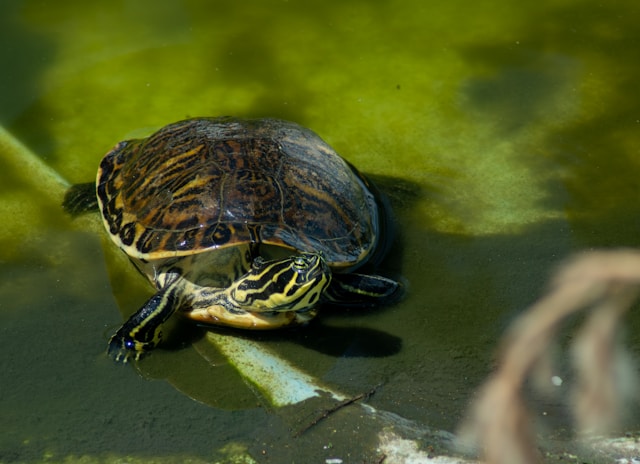Creating a suitable habitat for your pet turtle is crucial for its health and longevity. Turtles have specific environmental needs, including proper tank size, water quality, heating, and lighting. Whether you have an aquatic or semi-aquatic turtle, setting up the perfect enclosure will ensure they thrive.
Choosing the Right Enclosure
The first step in setting up a turtle habitat is selecting the right tank. The size of the tank depends on the species and its adult size. As a general rule, turtles need at least 10 gallons of water per inch of shell length. A 40-gallon tank is a good starting point for small turtles, but larger species require 75-gallon or even 100-gallon tanks.
Glass aquariums are the most popular choice, as they provide a clear view of your pet and are easy to clean. Some owners also opt for plastic tubs or outdoor ponds for larger turtles.
Water and Filtration System
Water quality is essential for an aquatic turtle’s health. Use dechlorinated water and ensure the water depth is appropriate for your species. For example, red-eared sliders need deep water to swim, while musk turtles prefer shallower environments.
A high-quality filtration system is necessary to remove waste, food debris, and bacteria. Canister filters are the best option, as they handle large amounts of water efficiently. Regular partial water changes (about 25% weekly) help maintain a clean environment.
Basking and Land Area
Turtles need both water and a dry basking area for proper thermoregulation. A basking platform allows them to dry off, absorb heat, and prevent shell infections.
When choosing a basking dock, consider floating platforms, rocks, or commercial turtle docks. Make sure it’s sturdy enough to support your pet’s weight and easily accessible.
Lighting and Temperature Control
Proper lighting is crucial for a turtle’s overall health. They require UVB lighting to help with calcium absorption and prevent metabolic bone disease. Without UVB exposure, turtles can develop shell deformities and other health issues.
In addition to UVB, turtles need heat lamps to maintain the correct basking temperature. The ideal temperature for a basking area is 85-90°F, while water should be kept between 75-80°F. Use a thermometer to monitor both the water and basking area temperature.
Substrate and Habitat Decorations
When setting up a turtle enclosure, choosing the right substrate is important. Some owners prefer a bare-bottom tank for easy cleaning, while others use river rocks or fine sand to create a more natural look. Avoid small gravel, as turtles may accidentally ingest it, leading to health problems.
Adding decorations like driftwood, live plants, or artificial caves can enhance the environment and provide enrichment. Ensure that all decorations are non-toxic and large enough to prevent accidental swallowing.
Diet and Feeding Setup
Turtles require a balanced diet consisting of commercial pellets, vegetables, and live or frozen protein sources like insects, fish, or shrimp. Setting up a designated feeding area can help keep the tank clean by reducing uneaten food in the water.
Each species has specific dietary needs, so research what foods are best for your turtle. Offering a varied diet ensures they get all the necessary nutrients.
Habitat Maintenance and Cleaning
Regular maintenance is essential for a healthy turtle habitat. A cleaning schedule should include:
- Daily: Remove uneaten food and debris.
- Weekly: Perform partial water changes and clean the basking area.
- Monthly: Deep clean the tank and replace filter media as needed.
Maintaining water quality prevents algae growth and keeps your turtle’s habitat odor-free.
Common Mistakes to Avoid
Many new turtle owners make mistakes that can impact their pet’s health. Here are some common errors to watch out for:
- Choosing a tank that’s too small, leading to stress and stunted growth.
- Not providing UVB lighting, which can cause shell deformities.
- Overfeeding, resulting in obesity and dirty water.
- Using inadequate filtration, leading to poor water quality and bacterial infections.
Conclusion
Setting up a proper turtle habitat requires careful planning, but it ensures your pet’s health and happiness. By providing the right tank size, clean water, UVB lighting, and a proper basking area, you can create a thriving environment for your pet turtle.









